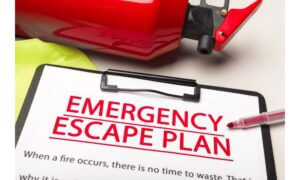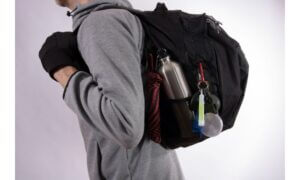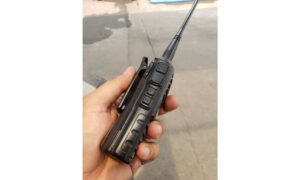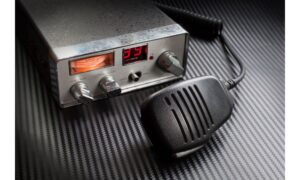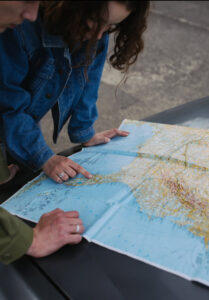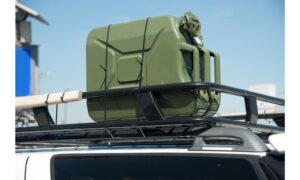Survival Prepping 101 Series Part 7: The Crucial Importance of Planning Your Evacuation Measures
Welcome back!
In our ongoing journey through the world of survival prepping preparations, we’ve already covered a lot of ground so far. However, today we’re diving into a topic that is often overlooked until it’s too late: evacuation planning.
We all like to believe that when disaster strikes, we can simply hunker down at home and weather the storm. While that might work in some cases, it’s not always a feasible option. Hurricanes, wildfires, civil unrest, or other unforeseen crises can force us to leave our homes and seek safer ground.
Think about this: some folks stubbornly refuse to evacuate when warned during survival situations, believing they can tough it out. Unfortunately, many end up suffering dire consequences as a result. So why wait for a crisis to hit? Let’s discuss why it’s vital for you and your family to have your evacuation plans ready well in advance.
The Pitfalls of Last-Minute Escapes
Imagine the chaos of a disaster unfolding, with panicked crowds all around you, desperately trying to find a way out. Without a pre-planned evacuation strategy, you could easily fall victim to stress and panic, leading to poor decisions that endanger your safety and that of your loved ones.
Evacuating without a plan in place is akin to navigating a ship without a compass. You might end up in uncharted waters, unsure of where to go or how to get there safely. In essence, you’re setting yourself up for avoidable hardships.
Moreover, it’s not just natural disasters like hurricanes that necessitate evacuation. Civil unrest or any situation where your safety is at risk could also force you to leave your home in a hurry. In such cases, preparedness can mean the difference between escaping unscathed or falling into harm’s way.
Tailor Your Evacuation Plans to Time Sensitivity
One critical aspect of evacuation planning is considering the time you have before you need to leave. Some events may give you days or even weeks to prepare, such as hurricanes that offer advanced warnings. In these cases, you’ll have the luxury of booking a hotel room or staying with family further inland. You can methodically pack your cherished belongings and load your car without the rush and panic of an imminent threat.
However, there are situations where you must act swiftly, with little to no time for preparation. In the blink of an eye, you might find yourself needing to grab what’s already packed and make a run for it. You may not even have the option of taking your car, especially in scenarios like civil unrest where roads end up blocked and unsafe.
This is where your bug-out bag becomes invaluable. Having it ready to go means you can grab your essential documents and other important survival items and head out the door in seconds. Don’t forget to plan for your pets, too. Ensure you have cages, leashes, food, and any necessary first aid items for your furry friends, or create a dedicated bug-out bag for them.
You Need To Plan for Every Family Member and Their Locations: The Power of Communication Devices
While it’s common to plan for everyone leaving together from your home, reality often differs. Some of your family members might be scattered across different locations when disaster strikes. One spouse might be at work, children at school, or even multiple schools if they’re of varying ages.
In such cases, you must decide whether it’s safer for some of your family members to stay put until everyone can reunite or if they should make their way to a predetermined safe location on their own. Effective communication is key here, especially if cell phone towers are down, overloaded or unreliable you’ll need alternative means to stay in touch.
Let’s explore the best options you should consider:
- Handheld Radios: Handheld two-way radios, often referred to as walkie-talkies, can be indispensable during evacuations. They operate on specific frequencies and don’t rely on cell towers, making them a reliable choice for short to medium-range communication. Assign each family member a radio with pre-set channels for clear communication. Ensure that everyone knows how to use them effectively.
- CB Radio: Citizens Band (CB) radios have been a staple of communication among truckers and travelers for years. These radios can offer extended communication ranges, especially when equipped with high-quality antennas. While CB radios require a bit more technical know-how, they can be invaluable for coordinating with others on the road or in your vicinity during an evacuation.
- Satellite Phones: When all else fails, satellite phones can be your lifeline. They connect via satellites orbiting the Earth, allowing communication in remote or disaster-stricken areas where traditional cell networks have collapsed. While satellite phones can be pricey, they’re a reliable option for staying in touch with your family members in different locations.
- Family Communication Plan: Develop a family communication plan that includes meeting points and check-in times. In cases where your family members are separated during an evacuation, having designated rendezvous points ensures everyone can regroup safely. You need to practise your plan regularly so that each of your family knows their role and responsibilities.
- Offline Messaging Apps: Before a crisis occurs, download offline messaging apps on your smartphones. These apps allow you to send text messages without needing a cellular network or Wi-Fi connection. While the range is limited, it can be useful for short-distance communication when separated from your family.
- Whistle or Signal Device: In chaotic situations, you might need a non-electronic way to communicate or signal for help. Whistles, signal mirrors, or even brightly colored flags can help you communicate your location or distress to family members or emergency responders.
- Emergency Codes: Develop a set of emergency codes or signals that your family can use to convey crucial information without drawing attention. These codes can be simple, such as a series of whistle blasts or hand signals, to communicate distress or safety. A set of ‘secret’ hand signals that only your family knows will be important as well to signal that one of you might be prevented from speaking freely. Certain code-words that have special meaning to your family could indicate ‘danger, don’t come home’ for example.
By incorporating a variety of communication devices into your evacuation plan, you increase your ability to stay in touch with family members, coordinate actions, and ensure everyone’s safety during a crisis. Each device serves a specific purpose and can be invaluable in different scenarios. Familiarize your family with their use, and regularly practice communication strategies to ensure everyone knows what to do when it matters most.
Selecting The Best Safe Havens Based on Transportation
Your choice of transportation plays a crucial role in evacuation planning. Depending on the situation, you might need to escape on foot to reach a safe haven, which could be another home, a government building, or even a wilderness area. Alternatively, you might need to drive to a different location or even take a flight out of the city to escape a volatile situation. Other transportation options like canoes, boats, motorbikes, bicycles, or even horses could come into play.
Identify various evacuation routes and plan for them according to the circumstances. For instance, flooding might make escaping on foot unsafe, so you’ll need to quickly find alternative routes. Ensure your family knows where to access laminated maps and how to use manual compasses in case digital GPS systems fail.
If you plan to evacuate by car, always keep your vehicle’s gas tank topped off and carry extra gas in a Jerry-can. Don’t rely on finding gas along the way, as you might encounter long lines or shortages during a crisis. Make sure the Jerry-can is tied to the outside of the car to avoid petrol-fumes inside your vehicle.
Always Be Prepared: Keeping Your Personal Modes of Transport Ready
One often overlooked but crucial aspect of evacuation planning is ensuring your personal modes of transport are always ready for action. Picture this scenario: you’re in the midst of a crisis, and every second counts. Having your vehicle’s gas tank filled up can be a game-changer. It enables you to drive longer distances without the stress of finding an open gas station, especially during power outages when fuel pumps are inoperable. So if you plan to evacuate by car, always keep your vehicle’s gas tank topped off and carry extra gas in a Jerry-can. Don’t rely on finding gas along the way, as you might encounter long lines or shortages during a crisis. Make sure the Jerry-can is tied to the outside of the car to avoid petrol-fumes inside your vehicle.
Moreover, a well-maintained vehicle is less likely to break down when you need it most. Regularly check your car’s engine, tires, and fluids to ensure it’s in optimal condition. By keeping your modes of transport fueled and maintained, you empower yourself to respond swiftly and effectively in any evacuation situation, enhancing your overall preparedness.
Practice Evacuating Under Realistic Conditions
Simply teaching your family the theory of evacuation isn’t enough. You must also practice it under realistic conditions, as if a genuine emergency were unfolding. Simulate a sense of urgency so everyone grasps the importance of quick action.
Rehearse how to get from one point to another, what items to gather, and what timeframes to work with during the evacuation. Make it clear that there might be a massive rush to evacuate all at once, potentially leading to traffic congestion or waiting periods, whether on the highway or elsewhere.
This type of training isn’t entirely new to most people, especially your children who learn evacuation measures in school during fire drills or tornado drills. By making these drills as realistic as possible, you instill a sense of urgency without causing unnecessary fear or anxiety for them.
For family members who may not be able to carry out these instructions independently, especially those with disabilities, elderly family members, or young children, ensure you have plans in place for others to assist them during the evacuation.
Maintain Calm and Composure
During an evacuation event, it’s crucial to maintain a calm and composed demeanor. Avoid overreacting or yelling at family members, as this can make their stress and panic worse. By staying level-headed, you set an example for others to follow, helping everyone navigate the situation with minimal stress.
Post-Evacuation Considerations
Lastly, part of your evacuation plans should address what to do after the immediate threat has passed. Not everyone who evacuates can return home right away and resume life as usual. Consider being without power for a while so make sure you have resources and information printed out so you know how to proceed if it’s unsafe to return home or if you find damage to your property and belongings.
In conclusion, planning your evacuation measures is a crucial aspect of your family’s survival preparedness that should not be taken lightly. By preparing well in advance, considering time sensitivity, accounting for family members’ locations, selecting safe havens based on transportation, and practicing evacuation under realistic conditions, you enhance your chances of navigating a crisis successfully.
Remember, staying calm and composed during evacuation is vital, as is having a plan for what to do after the immediate threat has passed.
Let’s go to the next article in our Survival Prepping 101 series: Survival Prepping 101 Series Part 8: Why You Need to Get Your Finances in Order Early On
Check out our previous Survival Prepping 101 article: Part 6
